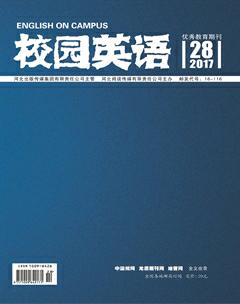A Critical Review on Douglas Robinson’s Becoming a Translator: an Introduction to the Theory and Practice of Translation
【Abstract】In this paper, the author makes a critical review on Douglas Robinsons book. By introducing the overall structure and interpretation and translation views held by Douglas Robinson, readers can gain a basic understanding into the profession as translators or interpreters.
【Key words】critical view; interpreter and translators role
Unlike most translation-related books revolving around translation techniques and skills, Robinson undertakes a different path, as indicated by the name of this book, putting his focus on translators subjectivity rather than the texts.
This book has overall 11 chapters, with the first two chapters shedding light on the two equally important views, namely the users and translators views. Contrary to the popular belief that clients expectations and needs should work as translators sole sacred creeds, Robinson points out the actual incongruities existing between the users and translators views. These incongruities are inevitable due to the different stances taken by users and translators. According to Robinson (2002), what is crucial to a translator such as professional pride and enjoyment may bear different meanings or even be of no significance to the user. This chasm in views also explains why Robinson put to pen this translator-oriented book by helping student and practicing translators not only learn this profession better but as well enhance their comprehensive abilities in dealing with real world problems of various kinds whenever arise.
Based on this translator-oriented view, Robinson starts out by defining the role of translators as learners and illustrates more on this by introducing learners memory models and learning styles in the third chapter. In the remaining chapters, he integrates knowledge from fields such as education, psychology, terminology, linguistics, sociology and cultural study with translation research so as to frame translating activities as a series of complicated processes performed by translators (and interpreters). Just as Robinson puts it, ‘Translation is a highly complicated process requiring rapid multilayered analyses of semantic fields, syntactic structures, the sociology and psychology of reader- or listener- response, and cultural difference(2002:50). In addition, by associating translation study with multi-disciplinary theories, Robinson expands the scope of options which translators as learners can take whatever useful and helpful to them from this fuller range of theoretical approaches.endprint
By comparing the mismatch between the expectations held respectively by the translator and the user, the author reveals to me a new sense of self-identity as a translator and interpreter. For instance, when it comes to the issue of work enjoyment, the author strikes me with examples of feminists refusal to translate sexist materials, and the like. As suggested by Robinson, there are indeed some translators burning out their passion and developing a distaste for translating every now and then. In order to prolong the professional life and enhance the work efficiency, the first and foremost concern for translators is to improve their level of enjoyment while working. This enjoyment does not come from nowhere but the sense of achievement accumulated by translating the very things they believe in. Translators will not be quickly worn out so long as they believe in the value of their work and materials they are translating. As a result, the enjoyment is closely entwined with the translators professional ethics, personal integrity and beliefs.
Clear and concise as Robinson presents each list of terms, what disappoints me a bit is his lack of further illustration of the underlying network that strings these terms together. For example, when he introduces ‘state-dependent learning under the title of ‘context in page 53, he fails to point out the possible interconnection between the previously discussed ‘emotional memory and this new concept. Since ‘emotional memory can ‘add(s) force to all learning (2002:52), should ‘state-dependent learning that is hinged on emotional and physical state be considered as a result of it? Trivial as this question might be, what I would like to stress is the close reasoning that both the author and readers should never be overlooked.
To conclude, this book serves as a practical guide to those who are eager to catch a glimpse into the profession of translating and interpreting. By highlighting the social nature of translators and interpreters, Robinson empowers the translation industry with more diverse and open-mined views.
References:
[1]Douglas Robinson.2002.Becoming a Translator:an Introduction to the Theory and Practice of Translation.London;New York: Routledge.
作者簡介:李美(1990.1-),女,陕西西安人,西安医学院英语系助教,双硕士,研究方向:英语语言学与英语教学法。endprint

